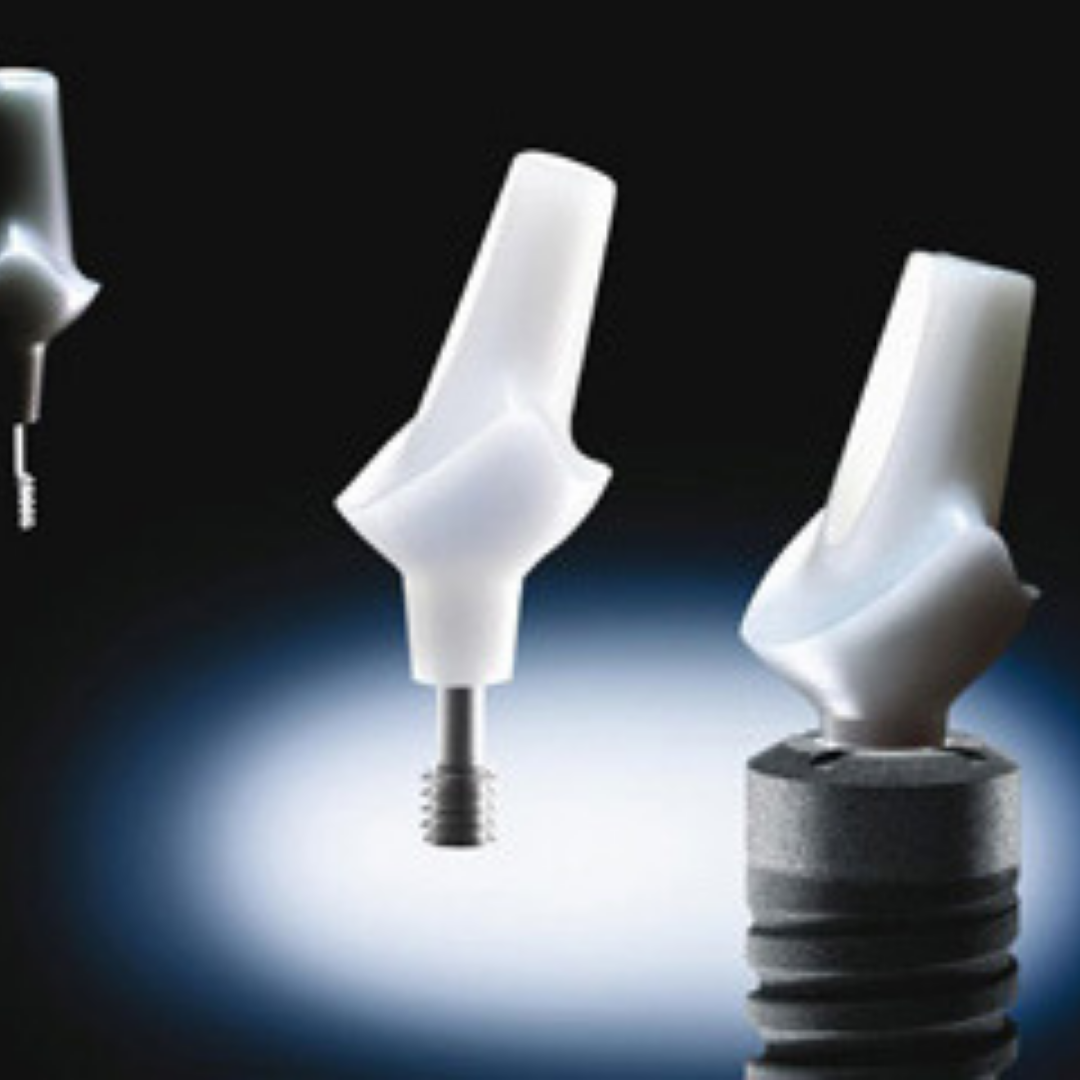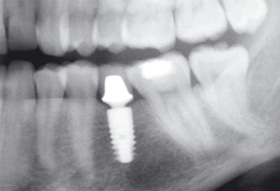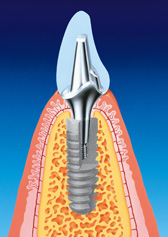Implantology

It often happens that restoration of missing teeth can only be done by implanting artificial titanium roots – implants.
The first implants were placed in the 1960s, and patients with implants are still using them. Many years of observations show that in healthy, non-smoking people, 98% of implants have long-term success.
Since 1995, we have specialized in this new but now routinely used therapeutic method. We use implants from many different companies, some of which, come with a ten-year warranty, providing our patients with an added sense of security.
Since the possibility of placing implants is closely related to the quantity and quality of the bone preserved in the oral cavity, which disappears quickly after the loss of teeth, it has become necessary to develop methods that allow its reconstruction.This guided regeneration of defects in hard (bone) and soft tissues (oral mucosa) allows, through the use of biomaterials and grafts of own tissues, to achieve excellent aesthetic and functional results.
In order to assess the condition of the bone and its predisposition to implants, a PANTOMOGRAPHIC PHOTOGRAPHY should be taken and a consultation with an implantologist should be arranged. As a result, it may be necessary to perform a CT scan of the jaws as an additional diagnostic test or other general tests ordered by the implantologist.
We would also like to introduce you to one of the latest developments in implantology. This is the NobelGuide method of very precise implant treatment planning, developed and introduced to authorized offices by Nobel Biocare.
It allows immediate loading of the implants with the final prosthetic work, already made before the implant procedure. The procedure is carried out with minimal trauma to the tissues, and the healing period is incomparably shorter than in traditional methods.
Planning of the procedure is carried out on the basis of a CT scan of the jaws and a radiographic template made specifically for this purpose.
The CT images are then analyzed by the doctor in a computer program. In the spatial image of the bone are placed phantoms of implants, precisely matched to its shape and size. On this basis, a surgical template is generated, allowing the planned solutions to be transferred to the patient’s mouth during the procedure.
What does this procedure look like from the patient's side?

After treating any decay and periodontal disease (oral sanitation), we make radiographic templates (or use the patient’s old removable dentures for this purpose) and a CT scan. The doctor then analyzes the results obtained , makes a design for the restorations, orders the necessary components for the procedure and prosthetic work in a dental laboratory.
At this stage, there are no more impressions, fitting, adjustments, etc. An appointment is made with the patient for the procedure, after which he leaves with a complete final or temporary (depending on the arrangement) prosthetic work. Slight pain and tissue swelling subsides within a few days. There is no need to remove sutures, as we do not incise the gums, we only remove a small piece of them directly above the implant.
The entirety of this procedure allows us to perform any restoration on implants. As with other implant procedures, the prerequisite is the proper condition of the jawbone and the patient’s overall good health.

